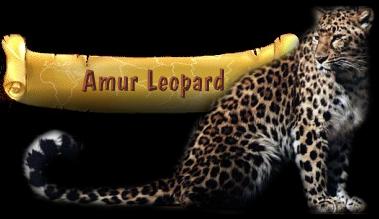

Amur Leopard - Page 1&2:
In The Wild | 3&4:
In Captivity | 5&6:
Subspecies Description |
7:
Weight & Length Figures | 8&9:
Conservation
Amur leopard prey and hunting techniques:As prey species reduce, the Amur leopard searches for other sources of food. Villagers raise the sika deer for their antlers which are used in traditional Chinese medicines. Tigers and leopards find the deer easy prey and are more than capable of climbing fences into the compounds. Each lost deer means lost income so the farmers try to kill the cats. The Amur leopard normally hunts at night, using the silent stalk and ambush technique also utilised by the tiger. During the attack phase the leopard may reach speeds of up to 35 miles per hour, but this is sustainable only for a very short time. Agility and tree climbing:Leopard kills are often dragged up into trees before being consumed. The tiger is essentially a terrestrial animal and prefers being on the ground. Despite having incredible muscle power, when climbing, they are very clumsy. On the other paw, the leopard can hang motionless from the bark of a vertical tree trunk, then by using its sheer strength can propel itself aloft.
These are extremely agile cats that can jump vertically up to 10 feet and double this length horizontally. Pound for pound they are 10 times as strong as humans, successfully carrying prey 3 times their own weight into the branches. This protects their food from other predators, including the main subject of this Web site, the tiger. Once a meal is finished the leopard is quite capable of descending a tree head first. Overall, there
are more than 20 subspecies of leopard; they are located in
both Asia and Africa. In fact, the
leopard is the widest-ranging big cat and extremely adaptable.
They live in a variety of habitats,
ranging from jungles to deserts, while some can be found
located near large cities. Eight subspecies are endangered,
four of these critically. |
|
|
Amur Leopard
- Page 1&2:
In The Wild | 3&4:
In Captivity | 5&6:
Subspecies Description
| Amur | Bali | Bengal | Caspian | Corbetts | Javan | Sumatran | South Chinese | Amur Leopard |
|
Photography
With Thanks To The Feline
Conservation Center (Photo 1, 3) |